Drifting Sides is a group show curated by Giacomo Zaza and hosted by Fondazione Stelline in Milan as part of the residency project PROGETTO FUTURA. Arte come risorsa esplorativa. Interagire, deviare, attestare (tr. FUTURA PROJECT. Art as an exploratory resource. Interact, deviate, attest), promoted by Fabbrica del Vapore and the Municipality of Milan cultural department.
Drifting Sides spotlights the evolution of contemporary Italian and international conceptual research, showcasing the work of fourteen artists who joined the residency program from May to July 2023. The exhibition recreates a kind of phylogeny, tracing the evolution of conceptual research from the ‘80s up to nowadays and providing a dialogue platform between different generations, perspectives, and analyses.
Moving through a noncontinuous and undisciplined ramification, the exhibition displays many visual experiences that are constantly changing: a hub of visual possibilities to decode. The works move along the borders of artistic production, searching for different trajectories and imagining unconventional reflections.
Showcasing a dialogue between time, space, identity and relationship, for Giacomo Zaza the exhibition is a deviation from a coordinated and centred system and all its formal and communication elements. A “swerve” telling about the historical past and collective memory, contemporary phobias and atavistic anguishes, untold scenarios, disorientation, sensible perceptions and freedom desire.
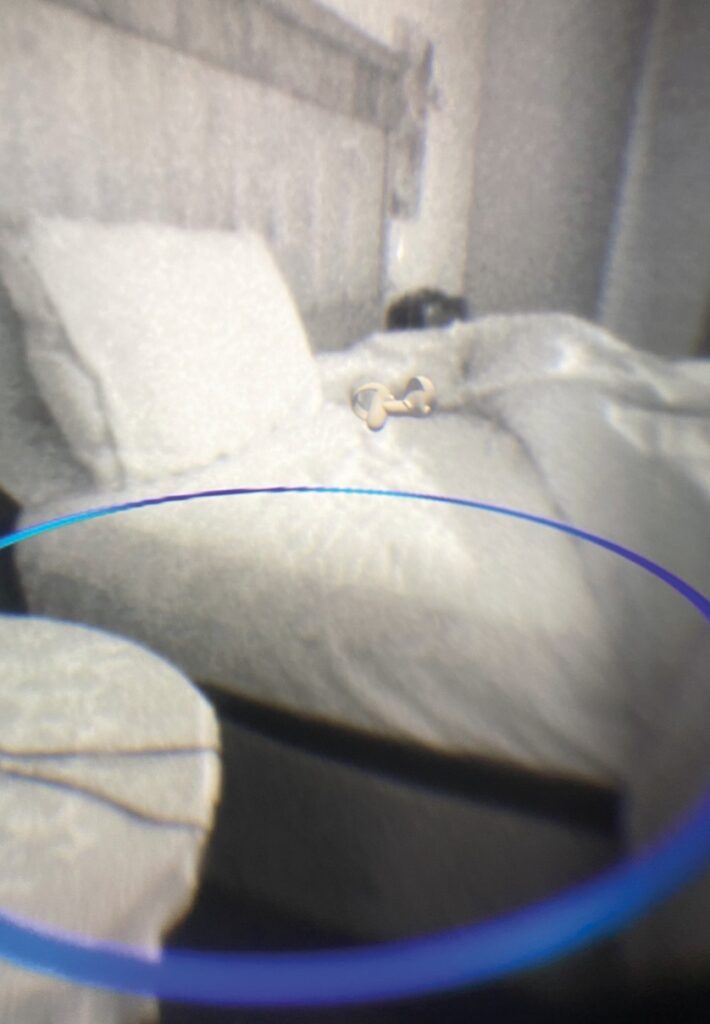
The viewer physically perceives this continuous shifting: the public must move around, along the sides of the room, bumping into the artists’ works, their ideas, reflections and nonsenses. It’s a mix of languages and genres, and art is shown as a concrete and material work, something to do and undo.
The exhibition moves against the contemporary need for immediate images and communication: in the era of social networks our capability to stay focused is sacrificed and not trained, everything is direct, automatised and not meditative. Drifting Sides stops this process, interrupting our relationship with the world around us, and establishing new layers of depth.
The works no longer follow conventional trajectories but rather become a concrete representation of alternative thoughts, images, inquiries and knowledge.
Our sight is continuously stimulated, and our peripheral vision is captivated by the appearance of other works that offer undiscovered stories, waiting to be deciphered and discovered.
Drifting Sides is composed of two lines of narrative, weaving together in the exhibition spaces of Fondazione Stelline.
The first line of narrative follows a metalinguistic approach and examines the semiotics of the gaze: here, the works analyse the media potentials in depicting space and coding perceptions, the gaze’s ways and its perceptive processes in reading images as blurring, reversal, repetition and mirroring.
Combining preexisting and sensible resources, the artists’ works represent a malleable plot, full of narrations by subtraction, vectorial expansions and contemplative spaces.
This is what we found in the works by Ange Leccia (b. 1952) and Rui Chafes (b. 1996), the last one exploring spaces’ contaminations and expansions, depicting the drive for elsewhere; Eva Marisaldi (b. 1966) and Enrico Serotti (b. 1960) whose works tell about a collective unconsciousness and the technological open-mindedness; and in Hicham Benohold (b. 1968).
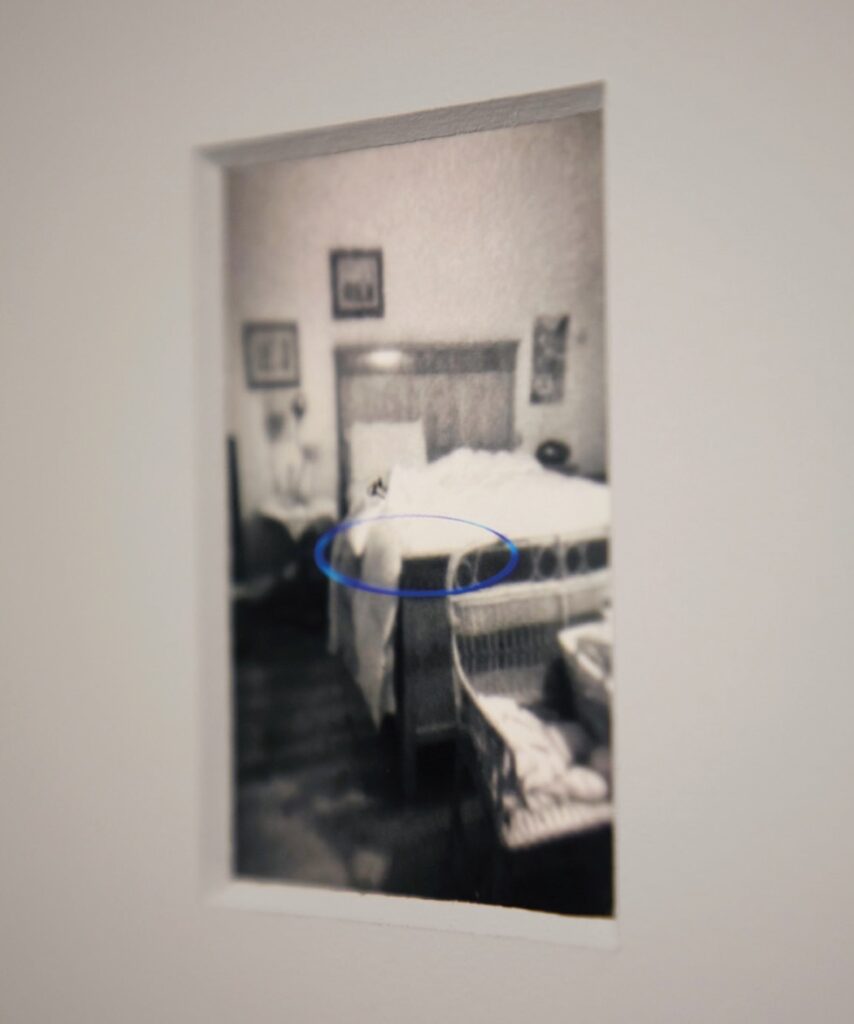
In particular, Giovanna Repetto (b. 1990) analyses the temporary metamorphosis of real and virtual spaces: Repetto explores the various aspects of photographic marks among perception, cognitive and sensible fields. Her practice is rooted in subtle aesthetics and explores new ways of seeing and feeling, moving between the functionalities of the human mind and consumer system dynamics, such as codification and simulation of factual reality.
For Drifting Sides Giovanna Repetto presents a photographic tryptic titled Shi-Shi (2023): the title refers to the traditional Chinese stone lions, also known as foo dogs, which were symbolic gatekeepers of Buddhist temples; it also alludes to the virtual visors’ perimetrical system called Guardian.
The series consists of three black-and-white photographs of domestic spaces: an intimate setting where the visitors appear to be voyeurs. These shots are overlaid with blue lines, representing the perimeter of a virtual space as seen through virtual visors and the Guardian system. The combination of both the real and the virtual worlds highlights their intimate exchangeable and close relationship, revealing the unseen and imaginary tension within the concreteness of everyday life. The pictures create a dream-like atmosphere through which the public and private spaces are reinterpreted.
Giovanna Repetto: «The series is shot with a smartphone through the lens of the Oculus Quest 2 and documents the Guardians contextualised in reality. The Guardian is the area marked by a characteristic iridescent cerulean infographic, which allows, through 6DOF freedom of movement, to turn on and immerse oneself in the virtual, avoiding colliding against objects belonging to the real.»
The second line of narrative focuses on the way images can depict relationships, social interactions, collective and historical memories, and human traumas.
These elements emerge in the works by Luis Gomez Armenteros (b. 1968) exploring the collective fear for technology empowerment; Lina Selander (b. 1973) analyses the relationship between images and memory from the perspective of a “violent and political act of deviance”; Lisa Martini (b. 1997) whose works are fulfilled with surreal atmospheres and in which the individual’s everyday life both impacts on and is impacted by collective sense; Benedetta Fioravanti (b. 1995); Valentina Furian (b. 1989) and Driant Zeneli (b. 1983), focusing on desires.
Scintilla is a work by Nicoletta Grillo (b. 1991) exploring how past events shape our present. It creates a dialogue between different places and biographies, allowing individual identities to discover their plurality.
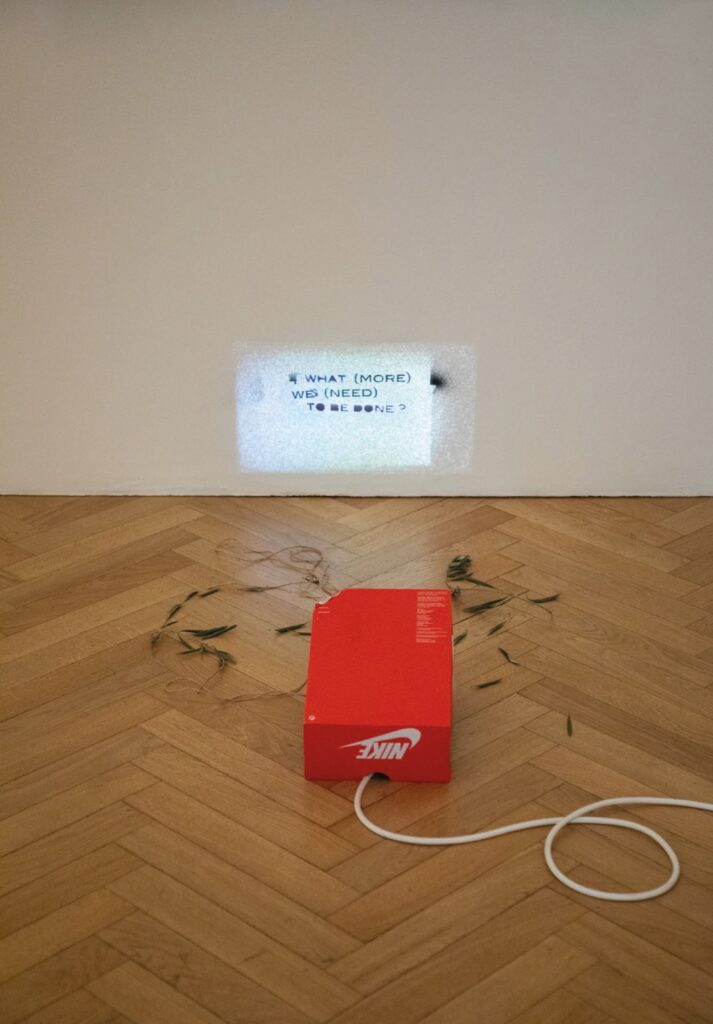
Scintilla sheds light on the hidden effects of work, particularly the exhausting labour. Nicoletta Grillo was inspired by a family’s history heard several times. Her grandfather worked in a steelworks factory, and every day, he wore a protective coverall made with asbestos fibres. He always brought it home for his wife to wash, unaware of the toxic and cancer-causing properties of asbestos. The coverall was supposed to protect workers from sparks, but it ended up affecting them and their families in unexpected ways.
Scintilla reflects on the close and dangerous relationship with asbestos fibres. The installation consists of a carousel projector that projects bright images of washing and breathing onto a glass surface. The idea of washing is recreated by an error in the photographic printing of the films, playing with the metalinguistic implication of the term; while the idea of breathing is portrayed by the little movements of a curtain caused by the wind. The dramatic composition of the work features familiar elements, places, and actions. Meanwhile, the rhythm of the carousel projector reminds of the work cycle required in industrial systems.
Behind the glass surface and hung on the wall is a picture of a workman dressed in his coverall and surrounded by sparks: an attractive and dangerous image revealing the ambiguousness hidden behind the images’ surface.
Davide Sgambaro (b. 1989) examines the complexities and rifts of human existence, the intricacies of relationships and illusions, and the modern systems of image production and communication. The works by Davide Sgambaro represent subtle yet incisive variations into the visible and the thinkable: drawing inspiration from the so-called low culture and contemporary paradoxes, the artist defines and examines the human condition as composed of sentient, restless, and dissident beings rather than passive consumers. The artist’s works accord dignity as a subject to the contemporary human being, drifting it apart from the opaque objectification to which it is chained due to the productive system and the performance society.
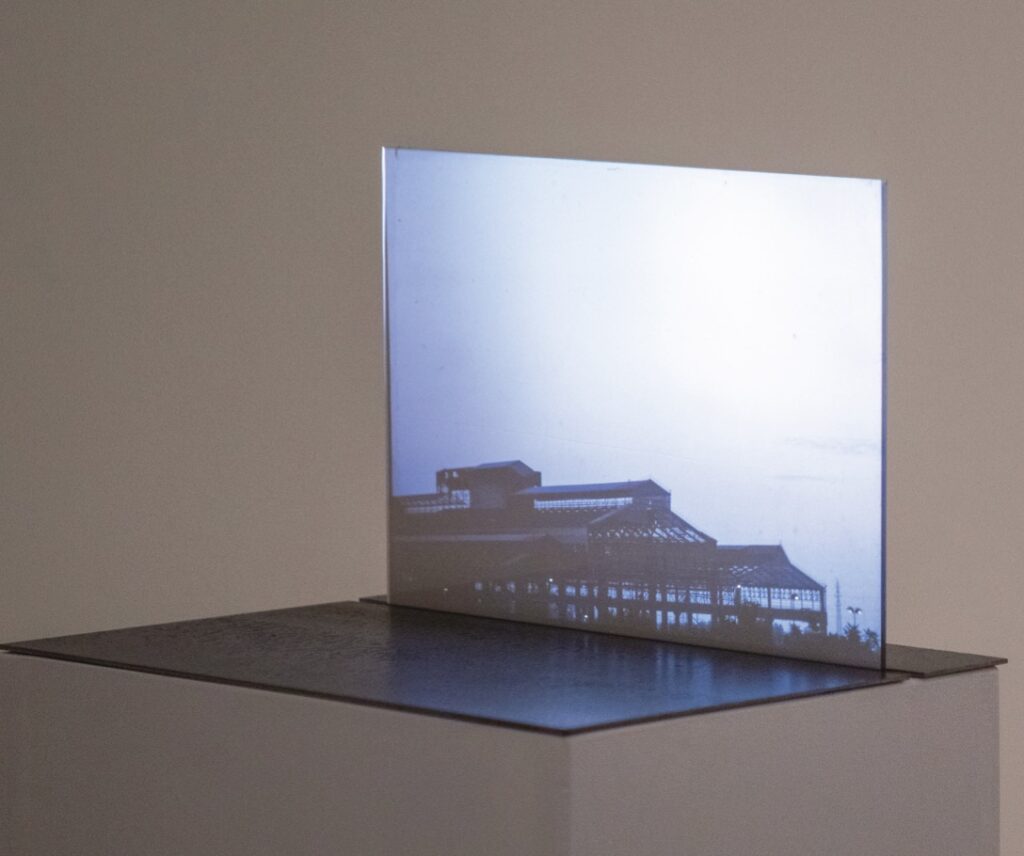
Sgambaro problematises the role of precariousness, self-promotion and dissolution within the artist’s career and its relationship with collective scenarios: nowadays, the political and social position of the artist is put aside or called off at all. As a result, art ends up being nothing more than an illusion, a purposeless idol born for media consumption and economic feedback.
I push a finger into my eyes takes inspiration from the kiss-kick-kiss formula, commonly used in the corporate world to express either positive or negative feedback. The work appears as a treasure chest containing traces of an explosion. As a metaphor for irascibility and resignation, the firecracker explosion is not visible to the audience because it took place during the exhibition set-up: the work appears as a phantom of a previous unseen and violent act, something the viewer has either lost, forgotten or ignored.
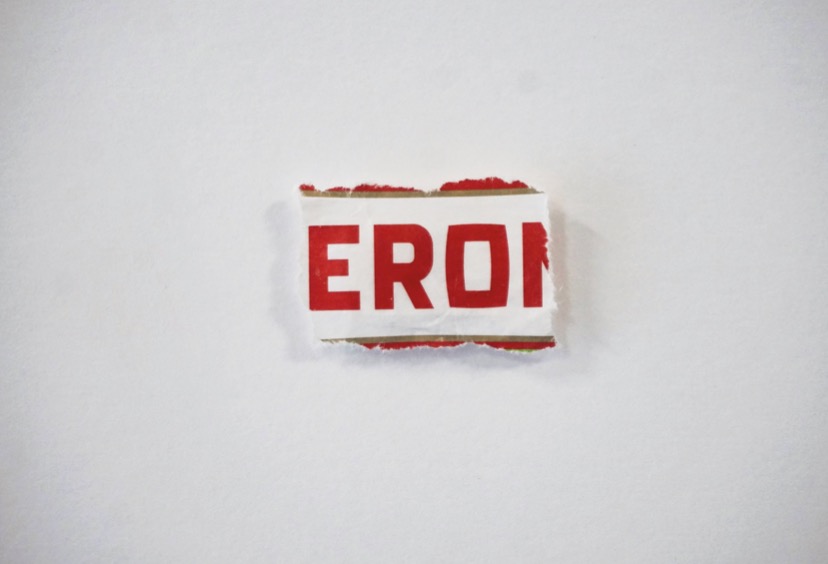
Eroi #1 is instead the ripped label of an Italian beer (Birra Peroni), composing the word “heroes”. At first glance, the beer alludes to a moment of amusement, a break accessible to everyone. At the same time, the word “heroes” does not refer to the artist’s virtuosity celebration, but it is a reflection on the contemporary art system. The use of the word “heroes” does not celebrate virtuous and capable artists, but rather reflects on the contemporary art system itself: the act of tearing tells about repressed emotions and the dichotomy between success and failure. Eroi #1 aims to portray identity, class, and human conflicts, while pushing back against the idea of meaningless idols and the production of aesthetically pleasing, rhetorical and apologetic production.
Drifting Sides is a worthwhile exhibition to dive into, that proposes a research put aside by the current market request but able to stimulate questions and a new sight of reality.










